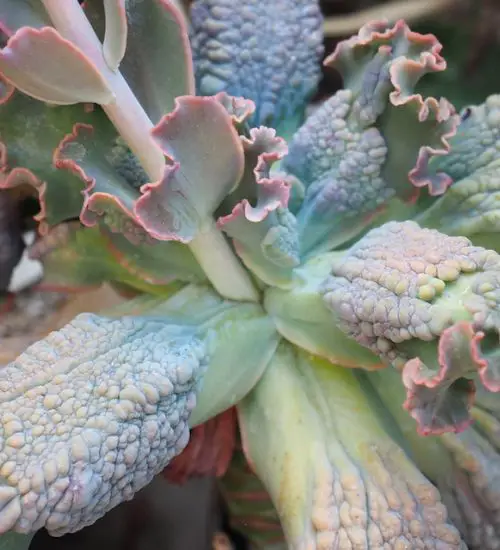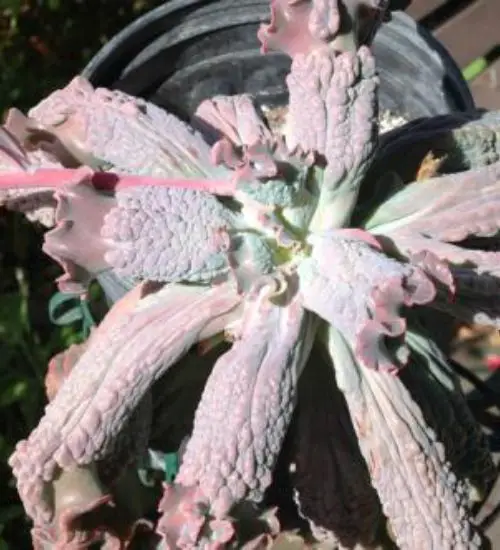Sun: full sun to partial shade
Water: Unknown - Tell us
Temperature: Unknown - Tell us
Winter Survival: Unknown - Tell us
Propagation: leaves, offsets
Flower: Unknown - Tell us
Flower Type: Unknown - Tell us
Toxic: Unknown - Tell us
Dormant: Unknown - Tell us
Space Requirement:
Common Problems:
Basc Care for Echeveria ‘Dragonas’
Watering
Regular watering period should be every 2 weeks
You can water your succulent more than often in extreme conditions but make sure that the soil is completely dry before watering your succulent again.
Fertilizing
Only feed this succulent during its active growing seasons which means winter. Use the right fertilizer applied in the right amounts. Applying half-strength balanced fertilizer every month or so is recommended for optimal results.
Do not fertilize during Unknown - Tell us as the plant is dormant.
Sun & Location Requirements for "Echeveria ‘Dragonas’"
Echeveria ‘Dragonas’ does best when placed in an area that receives full sun to partial shade throughout the day. This variety of succulents can tolerate direct sunlight for short periods, but if the temperatures get too high or the light is too intense it may be beneficial to find a shadier spot.
As per this succulent profile, it is only able to stay healthy when the environment temperature is above the range of unknown - Tell us.
Propagation
Propagating succulents by leaves is a great way to grow new plants from existing ones. Simply cut off a few healthy leaves from the mother plant and place them on top of a potting mix. Water the soil regularly, keeping it moist but not soggy, and soon you'll have brand new succulents!
Offsets are an easy and reliable way to propagate succulents, like Echeveria ‘Dragonas’. With just a few simple steps, you can get a brand-new plant from an existing one.
Toxicity



